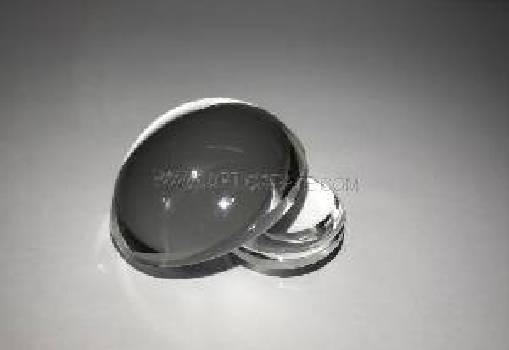We have learned from Ir Aspherical Lens Manufacturers that the so-called spherical and aspherical surfaces are mainly for the lens geometry of lenses (various cameras, microscopes, etc.), glasses (including contact lenses), namely spherical lenses and aspherical lenses. The difference between the two geometric shapes determines that they have a difference in the direction of refraction of parallel incident light, which affects the quality of their imaging effects.
Spherical Lens, the lens has a spherical curvature, and its cross section is also curved. When light of different wavelengths is incident on different positions on the lens with parallel optical axes, it cannot be focused into a point on the film plane (the plane that is perpendicular to the center of the lens and the focal point of the lens and passes through the focal point), and forms aberrations. Problems affect the quality of the image, such as sharpness degradation and distortion. Generally, ordinary lenses are composed of spherical lenses.

Aspherical Lens
In order to solve this imaging problem, you can add lenses in the lens body as a correction for aberrations, but this may cause adverse effects and further weaken the image quality, because the extra lens increases the light reflection in the lens body. The chance of causing flare will also increase the size and weight of the lens.
For Aspherical Lens, the lens is not spherical, but the edge of the lens is "cut off" a little, and its cross-section is flat. When the light is incident on the aspheric mirror, the light can be focused on a point, that is, on the film plane to eliminate various aberrations. For example, the flare phenomenon is more serious when using a spherical lens with a large aperture than when shooting with a fine aperture. However, if an aspheric lens is added, the flare can be greatly reduced. Another example is that the image appears deformed (pillow or barrel) because of the lens. The light is not properly refracted. Take a zoom lens as an example. When the focal length is short, it is usually barrel-shaped and when zooming to a long focal length, it is pincushion-shaped. If an aspheric lens is used, this aberration can be improved.
The use of aspheric lens technology is most beneficial to the production of lenses with large apertures, high magnification zooms, and even extreme wide-angle and telephoto lenses. The image quality is improved due to the reduction of aberrations, and the lens body size is also reduced. At present, many lens manufacturers in the market have stated that some of their focal length lenses use aspheric lenses, and even portable zoom cameras (such as 28 to 90mm, 38 to 105mm, etc.) use aspheric lens designs to improve image quality.
The difficulty in making aspherical mirrors lies in the design of its geometric dimensions and the precise control of geometric dimensions. The technology in this area is the most advanced in Japan. At present, there are two main methods for processing aspheric mirrors: one is to reprocess the spherical lens with high-precision grinding technology (manual or mechanical); the other is to use high-precision molds for compression molding or injection molding to directly make aspheric lenses .
Previous: Where gauge glass application
Next: Intelligent Blood Collection Management System Overall Solution
Copyright:@2020-2021
Comments Please sign in or sign up to post.
0
0 of 500 characters used